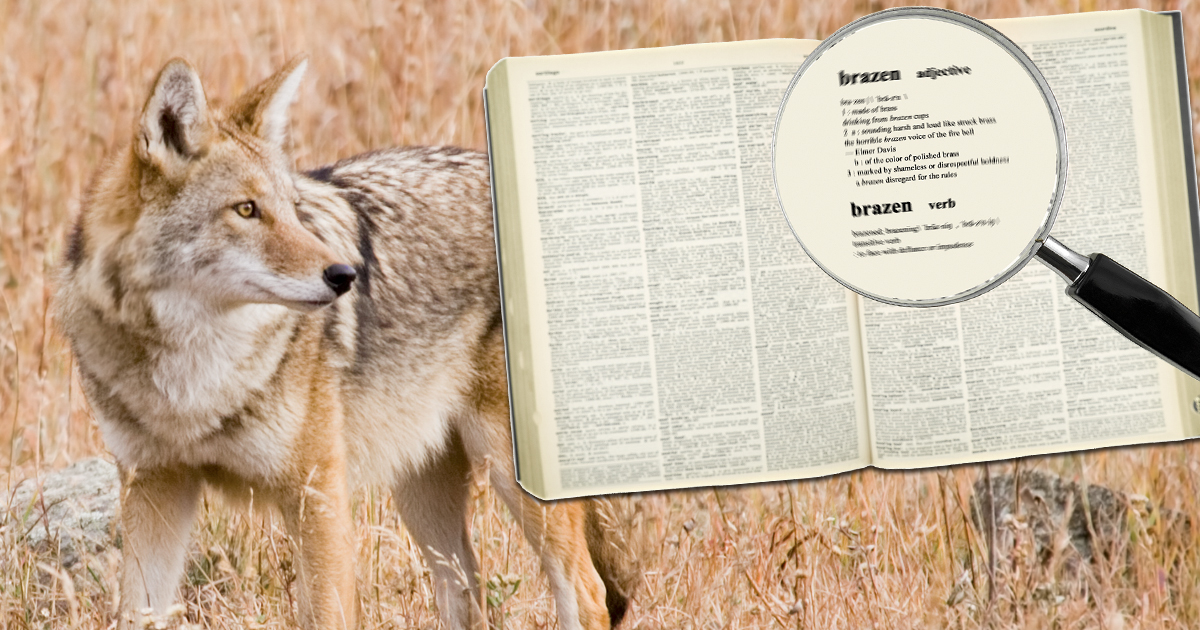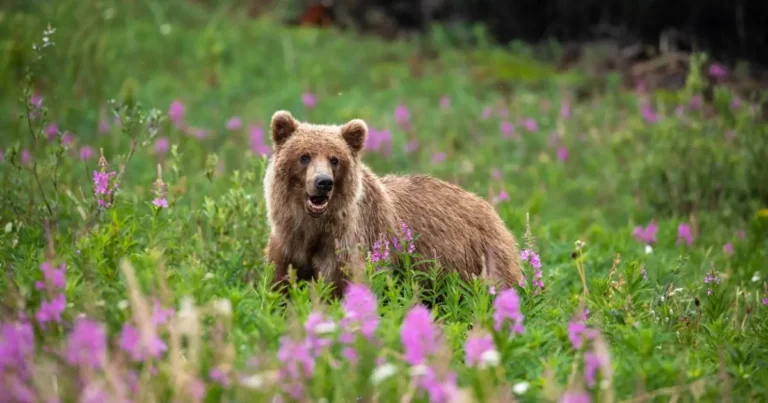
Coyotes and their actions are often described with sensationalized and prejudiced language in the media – and the ongoing use of some terms have us scratching our heads at The Fur-Bearers.
Media sensationalism of coyotes is demonstrably true. Simply reading an article – even one that otherwise is accurate and fact-based – shows human projection of emotional intent on action; a media content analysis conducted by Dr. Shelley Alexander and Michael Quinn also showed that “Coyotes in cities that are involved in an interaction with humans or pets are described to have ‘attacked’ in 185 articles analyzed from 1998-2010, with 272 references to attack(ed/ing) and three using the word ‘maul.’”
The study also indicated that the term “brazen” was used 16 times in these articles. It’s a word that still comes up regularly in describing coyote behaviour – even in articles illustrating important coexistence information. The definitions of ‘brazen’ may create pause for those who have used the term:
Brazen (adjective)
1: made of brass
2a: sounding harsh and loud like struck brass
b: of the color of polished brass
3: marked by shameless or disrespectful boldness
Brazen (verb)
to face with defiance or impudence
Are people concerned that coyotes are defying them or treating them without respect? If so, what does respect (a human construct) from a coyote look like? Would it require a coyote to bow as humans pass, showing deference? Or perhaps a nicely written apology on formal letterhead for being a wild animal?
Ridiculous? Yes. But then, so is calling a coyote brazen. In fact, many of the terms we use to describe coyotes in the media range from mildly to extremely ridiculous; yet it perseveres.
We are in an era where we are learning about the power of words on political and economic landscapes, and the ripple effect those words can have. It behooves us as a society (and advocates within that society) to challenge the words used by media and our communities and learn to identify and translate non-human behaviour without our preconceived beliefs.
Check out our list of things media (and the general public) should learn about reporting on coyotes and other wildlife by reading this article.
Alexander, S. M., & Quinn, M. S. (2011). Portrayal of Interactions Between Humans and Coyotes (Canis latrans): Content Analysis of Canadian Print Media (1998-2010). Cities and the Environment, 4(1), 1-24. doi:10.15365/cate.4172012)

